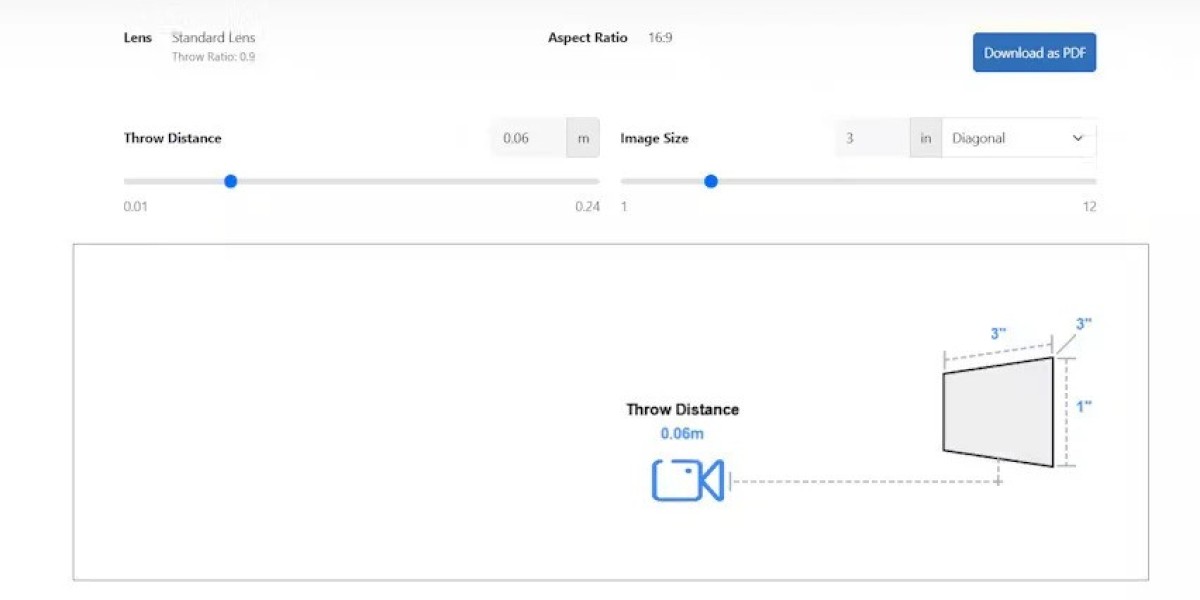When selecting a projector, many users focus on brightness, resolution, and image size. While these factors are crucial, another essential specification that directly impacts image quality is projector contrast ratio. Understanding contrast ratio helps AV professionals, home theater enthusiasts, and educators achieve sharp, vibrant, and visually pleasing images. In this guide, we explore what projector contrast ratio is, why it matters, and how it affects your viewing experience.
What Is Projector Contrast Ratio
Projector contrast ratio is the measurement of the difference between the brightest white and the darkest black that a projector can display. It is expressed as a ratio, such as 1000:1, meaning the brightest white is 1000 times brighter than the darkest black. Contrast ratio is a critical factor in determining image depth, color accuracy, and the overall realism of the projected content. A higher contrast ratio typically results in richer blacks, more vivid colors, and a more immersive viewing experience.
How Contrast Ratio Affects Image Quality
Depth and Detail
A high projector contrast ratio allows finer details to be visible in both dark and bright scenes. Shadows, textures, and subtle highlights become distinguishable, creating a more realistic and engaging image. Low contrast projectors may appear washed out, with dark scenes lacking detail and bright scenes looking overly bright.Color Accuracy
Contrast ratio impacts how accurately colors are reproduced. High contrast projectors can differentiate between shades of colors better, making images more vibrant and lifelike. This is particularly important for presentations, movies, or any content where color fidelity is crucial.Perceived Sharpness
Images projected with higher contrast ratios appear sharper to the human eye. The difference between light and dark areas enhances perceived clarity, even if the projector resolution remains the same.Ambient Light Handling
In environments with some ambient light, a higher contrast ratio helps maintain image clarity. While brightness is essential, contrast ratio ensures that blacks remain deep and shadows are preserved even in non-darkened rooms.
Types of Contrast Ratios
Native Contrast Ratio
Native contrast ratio refers to the inherent contrast capability of the projector’s display technology, such as DLP, LCD, or LCoS. It represents the true performance without any digital manipulation. Native contrast is the most reliable measure of a projector’s real-world performance.Dynamic Contrast Ratio
Dynamic contrast ratio involves adjusting the projector’s lamp or light source intensity dynamically to enhance perceived contrast. This can make blacks appear darker in dark scenes and highlights brighter in bright scenes. While dynamic contrast can improve visual perception, it may not reflect true image performance consistently.
Why Projector Contrast Ratio Matters for Different Applications
Home Theater
For movies and TV shows, a high contrast ratio enhances cinematic experiences. Dark scenes appear more detailed, and highlights in bright scenes pop without appearing washed out. High contrast ratios are particularly important for viewing HDR content.Corporate Presentations
In conference rooms, contrast ratio ensures charts, graphs, and text remain legible. While ambient light can affect visibility, a projector with a good contrast ratio improves clarity and readability.Educational Spaces
Teachers and instructors benefit from higher contrast ratios because it makes slides, diagrams, and multimedia content easier to see. Students can clearly distinguish details, improving comprehension and engagement.Art and Design Applications
For graphic design, photography, and video editing, accurate colors and deep blacks are essential. Projector contrast ratio directly influences how true-to-life the images appear, helping professionals make precise judgments on their work.
Factors That Affect Projector Contrast Ratio
Projection Technology: Different display technologies offer varying native contrast ratios. DLP projectors often provide higher contrast than LCD projectors.
Ambient Light: Bright environments reduce perceived contrast. Controlling ambient light or using high contrast screens can help.
Screen Type: High-gain or specialized projection screens can enhance perceived contrast by reflecting more light and improving black levels.
Lamp or Light Source Quality: Projector lamps degrade over time, reducing brightness and contrast. LED and laser light sources often maintain consistent contrast longer.
Practical Tips for Choosing the Right Contrast Ratio
Consider Room Conditions: If your room has controlled lighting, you can prioritize native contrast ratio for more accurate performance. In bright rooms, dynamic contrast combined with higher brightness may be more effective.
Match Content Type: For movies and gaming, a higher contrast ratio enhances the immersive experience. For presentations or classroom use, moderate contrast ratios may suffice.
Evaluate Screens: Using a screen with proper gain and ambient light rejection can amplify the benefits of a high contrast projector.
Check Technology Specifications: Compare native versus dynamic contrast ratios to understand real-world performance. Avoid relying solely on exaggerated manufacturer specifications.
Examples of Projector Contrast Ratio Impact
Home Theater Movie Night: A 3000:1 contrast ratio projector displays dark scenes with deep blacks while highlighting subtle details in shadowed areas, making action and drama scenes more engaging.
Classroom Presentation: A 2000:1 contrast ratio ensures text and charts remain readable even with lights partially on, improving student comprehension.
Graphic Design Review: A high contrast ratio projector allows designers to see subtle color variations in images, enabling more accurate editing and judgment.
Conclusion
Projector contrast ratio is one of the most important factors in achieving high-quality, immersive, and visually accurate images. Whether for home theater, corporate presentations, educational environments, or professional design, understanding contrast ratio helps users select the right projector for their needs. A high contrast ratio ensures deep blacks, vivid colors, clear details, and an overall enhanced viewing experience.
XTEN-AV provides guidance and resources to help AV professionals, educators, and enthusiasts choose projectors with the ideal projector contrast ratio for their environment. By focusing on contrast as well as brightness and resolution, you can achieve stunning visuals that transform any space into a dynamic viewing environment.






